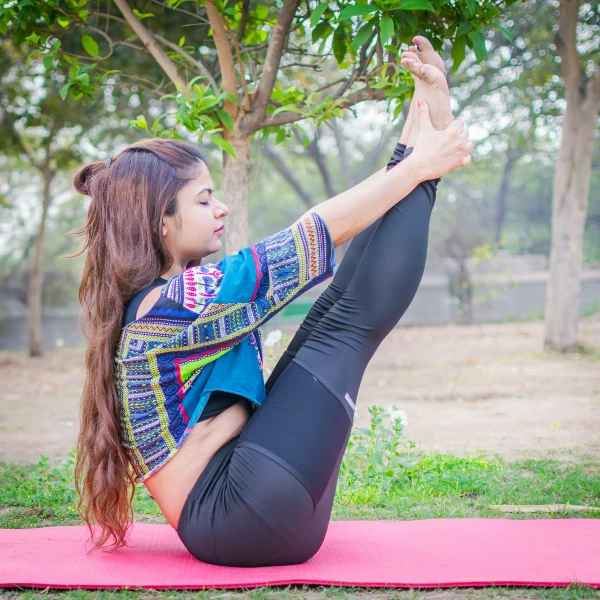Dana Santas is a certified strength and conditioning specialist, experienced registered yoga teacher and mind-body coach known as the Mobility Maker. She’s the yoga coach for the Toronto Blue Jays, Philadelphia Phillies, Tampa Bay Rays, Atlanta Braves, Tampa Bay Lightning and others in Major League Baseball, the National Hockey League, the National Football League, the National Basketball Association and the Professional Golfers’ Association.
She recently contributed a story to CCN, titled Recovering from surgery or stress? Yoga can help, which recounted her personal battle with injury, and how yoga helped.
Despite having prepared myself mentally and physically for hernia surgery, I was not ready for the post-surgical reality of a major core repair. Honestly, during that first week, between the pain, swelling and immobility, I felt like an alien in a human meat suit — completely disconnected from my body.That’s when relying on my restorative yoga training was essential, especially for my mental health.Whether you need to recover from a stressful day, a strenuous workout or even an injury or surgery, restorative yoga may be just the thing for you. In fact, if you’re recovering from surgery, it may be one of the only forms of exercise that’s safe and effective.
Sure, some forms of yoga, such as power and vinyasa, can be quite strenuous. But restorative yoga is much gentler, encouraging the use of props like pillows and blankets to facilitate relaxation. It’s all about initiating our parasympathetic nervous system, the “rest and restore” aspect of our autonomic nervous system that stimulates the body’s processes for restoration and recovery, such as digestion, sleep and tissue repair.
In fact, because of its physiological benefits, research suggests that the use of restorative yoga-based practices can actually decrease healing time.
Santas goes on to share a few exercises she’s used in her own rehabilitation, including:
Diaphragmatic Breathing With Mantra Meditation
Diaphragmatic breathing is your most efficient and effective ally in the recovery process. It takes only 90 seconds of deep breathing to begin decreasing your heart rate and blood pressure and stimulating aspects of your nervous, endocrine and circulatory systems that promote relaxation and restoration.
- Take a comfortable position sitting or lying down.
- To establish diaphragmatic breathing, focus your attention on the lowest lobes of your lungs and the corresponding lower-rib movement.
- When you inhale deeply, your lower ribs externally rotate, expanding outward.
- When you exhale completely, your lower ribs internally rotate, moving in and down.
- Once you’ve established a long, deep breath, begin repeating a mantra to coincide with each inhalation and exhalation. A mantra is a single word or phrase intended to help shape our thoughts in positive ways. Some of the world’s most successful leaders, like Steve Jobs, have been known to use mantras.
- Take 10 or more long deep breaths, repeating your mantra in synch with your breathing.
Supported Fish Pose
- Lie supine on a bolster or large pillow so that your entire back, shoulders, neck and head are supported.
- As long as you don’t experience low-back pain, extend your legs straight out on the floor.
- Otherwise, you can modify by bending your knees.
- Let your arms rest out to the sides to create an opening sensation.
- This pose releases chest, neck and shoulder tension. Once approved by your doctor, this can be effective for gently releasing scar tissue and adhesions in people recovering from heart, lung and breast surgeries. Gentle is the key word here. Always listen to your body. Nothing about restorative yoga should feel cautionary or cause anxiety.
- As long as you’re comfortable, remain here for 10 or more long, deep breaths.
Legs up the Wall
Legs-up-the-wall pose, known as Viparita Karani in Sanskrit, is arguably the most popular restorative yoga pose. It’s definitely my favorite. My body reacts to the stresses of surgery by producing a high degree of edema, especially in my legs. By changing our relationship with gravity and raising our legs above our heart, we promote venous blood flow that reduces swelling.
- To get into this posture, simply sit on the floor with your right shoulder and right hip a few inches from a wall.
- Lower your left shoulder toward the floor and swing your legs straight up the wall with your back and head resting on the ground.
- If having your legs straight up is too much for you, modify by resting them on a chair seat with your knees bent. If you experience discomfort in your neck or back, place a thin pillow or folded blanket behind your head and/or hips.
- Remain in this posture for at least 10 long, deep breaths.
Progressive Muscle Relaxation
You can do this exercise from sitting, standing or lying down. The goal of this practice is to actively create a sense of relaxation throughout your body by first tensing each area to establish an awareness and connection. Establish diaphragmatic breathing and maintain it throughout the exercise.
- On an inhalation, close your eyes tightly while clenching your teeth to tighten your jaw.
- Exhale to release (but you can keep your eyes gently closed, if you prefer), softening your face, jaw and tongue.
- Inhale fully, expanding every part of your ribcage, and hold your breath, creating tension in your chest, upper back and neck.
- Exhale to release completely.
- Inhale and squeeze your hands into fists, tensing all the muscles of your arms.
- Exhale to release.
- Inhale to squeeze the muscles of your bottom and pelvic floor while tightening your abdomen.
- Exhale to release.
- Inhale to curl your toes while trying to activate all the muscles of your legs.
- Exhale to release.
- Take 10 or more long, deep breaths while resting in awareness of a state of complete relaxation.





